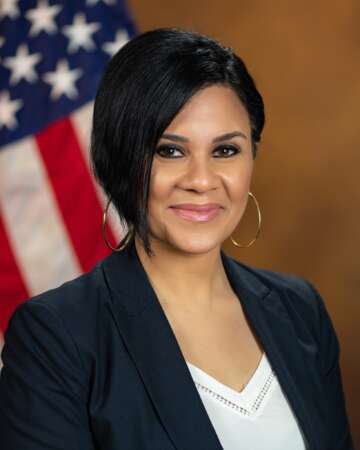
As the nation’s largest law firm, the Department of Justice (DoJ) is looking to make its services more accessible, effective, and efficient through its newly launched “Access DOJ” customer experience (CX) hub.
Access DOJ is a department-wide initiative led by the Office for Access to Justice (ATJ) that uses human-centered design and CX methodologies to make it easier for people to access Justice Department services.
In an exclusive interview with MeriTalk, ATJ Director Rachel Rossi discussed the new initiative, which she hopes will help “ensure that justice belongs to everyone.”
“We launched Access DOJ because we saw the need for a centralized hub and dedicated expertise on human-centered design and customer experience, which before this, actually did not exist at DoJ,” Rossi told MeriTalk.

“Through the initiative, our goal is to ensure that DoJ’s services are more accessible, effective, and efficient at meeting the needs of the diverse communities that we serve across the country,” she added. “We also are hopeful that Access DOJ will help us to streamline processes and reduce unnecessary personnel hours, promoting cost savings and fiscal responsibility.”
The Justice Department launched Access DOJ in June, and one of its first high-impact projects will be looking at how to make it easier for people to submit a tip or report a crime or other violations of the law to the department.
Rossi said the DoJ will be taking an in-depth look at its online portals, apps, and other digital touchpoints to see where human-centered design can make this process easier.
“The reason we’re doing that [is] we know that contacting law enforcement or the Department of Justice can in and of itself be daunting enough on its own for many communities,” she said. “So, we want to make that process as easy as possible to find, to understand, and to use, and we also know that that’s going to promote trust in the Department of Justice and in our mission.”
The department will be specifically focusing on underserved communities, including deaf and hard-of-hearing communities, people with other disabilities, rural communities, and Tribal communities, among others.
In today’s digital age, the ATJ director said that improving customer experience and accessibility at the DoJ is “so important.” As the majority of the public accesses information online, Rossi said “people are expecting that the government is just as simple and seamless and secure to access as private sector companies.”
“What we’ve been excited to see is that, given the digital age that we’re in, the Federal government is also starting to kind of catch up and be engaged in this lane,” Rossi said. “At the end of the day, our laws and the protections they provide are only as good as the ability of the public to access them.”
Rossi explained that one of ATJ’s early projects that led to the launch of Access DoJ focused on removing barriers for those applying for a presidential pardon.
After discovering that the majority of application forms for a presidential pardon were incomplete or unresponsive, ATJ partnered with the Office of the Pardon Attorney (PARDON) to make the process easier.
The two offices found that shortening the amount of required content was an easy first step. For example, the form included a question that requires applicants to include their work history and residence history since the time of conviction – something that could be decades for some people. They decided to shorten that question to just a few years, Rossi said.
ATJ and PARDON also conducted a plain language review and removed unnecessary questions. For the necessary questions, the form now provides explanations for why they are required “to give people a better understanding of the reason for it,” Rossi said.
“One of the things that was most fascinating was in doing that user testing, people told us that starting at the beginning of the form by telling us about the crime they committed was emotionally very difficult and draining and hard for people because they were completing this process to try and demonstrate that they are succeeding and how far they’ve come,” Rossi said.
“As we think about human-centered design methodologies and access to justice principles, oftentimes emotional barriers can actually implicate how good the responses are,” she continued. “So, just making a change to put that question at the end and start the question with ‘Tell us why you are here today and about your successes,’ we found that actually alleviated a lot of that emotional burden. So, that’s one example of how we conducted this work.”
Going forward, Access DOJ plans to annually select and conduct a high-impact project in partnership with a DoJ office – like it did with PARDON. It also will provide resources, trainings, and technical support to other DoJ offices.
“The resources and trainings are going to center on specific topics of high importance to Federal agencies and the Justice Department,” Rossi said. “We want them to be hands-on and relevant tools to expand CX practices across DoJ, so this could include how to use plain language [and] how to do usability testing.”
Additionally, she said the resources and trainings will explain how to navigate Federal laws, processes, and regulations that could be implicated with this type of work – such as the Paperwork Reduction Act.
Finally, Rossi said Access DOJ is chairing “a newly launched community of practice that is made up of representatives from across DoJ, so that we can share successes and challenges and identify solutions – advancing the work together.”
“We’re just starting the effort to compile what those trainings and resources will be, but I think the community of practice will also be incredibly helpful because we’ll be able to have that consistent communication to understand what additional resources people need,” Rossi said.
